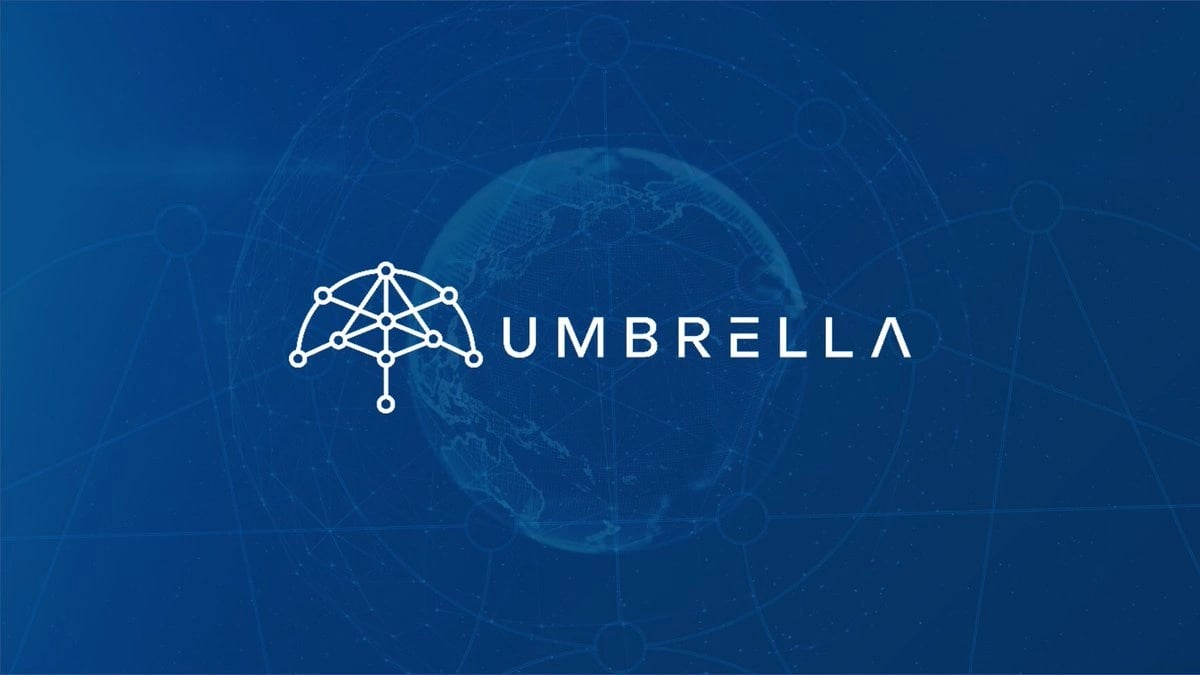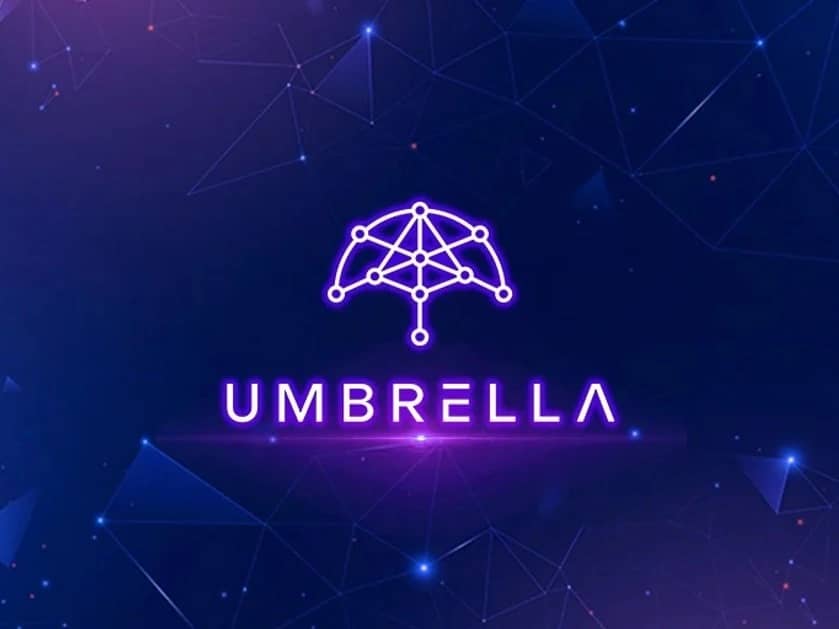Subscribe to wiki
Share wiki
Bookmark
Umbrella Network
The Agent Tokenization Platform (ATP):Build autonomous agents with the Agent Development Kit (ADK)
Umbrella Network
Umbrella Network is a layer-2, community-owned, decentralized oracle service providing secure scalable data solutions for decentralized finance (DeFi) applications. [1][2][3]
Overview
Founded in 2020 by crypto, ad tech, and blockchain entrepreneur Sam Kim[6], Umbrella Network is a decentralized oracle services provider, specializing in furnishing verified, secure, and fast real-world data for smart contracts. [1][2]
Their offerings encompass linking data to the blockchain, supplying developers with a varied array of data, and delivering tailored data solutions. They extend support across multiple blockchains and draw data from reputable sources. Umbrella Network prioritizes the security and reliability of the data underpinning blockchain applications. [4]
In September 2021, Umbrella Network acquired Lucidity, a blockchain-based advertising and analytics platform, to bring more data transparency to advertisers. [25]
"Lucidity is delivering marked improvements in the performance of advertising campaigns for its current client base by taking off-chain data stored in multiple centralized databases and moving it to the blockchain securely.
By combining its advanced analytical capabilities with Umbrella's oracle network, we will be able to deliver unparalleled insights to marketers." - said Sam Kim, Partner at Umbrella Network. [25]
In December 2021, Umbrella Network launched a $15 Million Oracle accelerator program for projects looking to build data pipelines to the cryptocurrency market. The $15 million accelerator program was intended to fund companies bringing data solutions to the blockchain ecosystem. [26]

On-Chain Data
This is for projects requiring customized data feeds integrated on-chain with specified parameters like deviation triggers and heartbeat, this solution proves suitable for various applications such as vault tokens, volatility monitoring, TWAPs, and similar needs. It offers real-time, customizable data access for enhanced functionality. [5]
Layer 2 Data
For projects seeking secure on-chain data storage at scale, the Layer-2 Data solution offers a robust solution. Whether operating within the DeFi sector, prediction markets, or developing data-intensive Web3 solutions, it guarantees secure and accessible data to bolster users' applications. [5]
On-Demand Data
This is for projects requiring high-frequency data. Signed off-chain data written into any smart contract on demand. This feature is ideal for high-frequency perps or spot trading platforms where timing is crucial. [5]
Technology
Umbrella Network’s technical architecture uses economic incentives to provide users with verifiable data using cryptographic proofs that reside on layer 1 blockchains. [8]
Merkle Trees
The Umbrella platform uses a technology known as “the Merkle tree” to facilitate scalability. A Merkle tree (sometimes known as a binary hash tree) is an efficient and secure type of data structure that makes it possible to verify large quantities of data. [8]
Merkle trees offer efficiency in finalizing blockchain transactions and conserving computational resources. Also, decentralized applications (dApps) benefit from their use, enabling secure on-chain incorporation of numerous data points at a minimal cost. By combining hashes from multiple data blocks, Merkle trees summarize transactions within a block. Utilizing Merkle trees with a Proof-of-Stake (PoS) consensus mechanism allows bundling multiple transactions into one, simplifying scalability efforts and reducing transaction fees by enabling payment with a single fee. [8]
Data
The platform uses two primary data types: First Class Data (FCD) and Layer 2 Data (L2D). FCD comprises commonly used datasets such as trading pairs and implied volatility, consistently available on-chain and often requested by large oracles. L2D offers a comprehensive dataset encompassing crypto pairs, indexes, and implied and realized volatility, among other data. [8]
Additionally, L2D data pairs utilize Merkle trees to anchor to layer 1 blockchains. Moreover, developers can access 84 widely-used data pairs on Umbrella's layer 2 solution without charge. [8]
Umbrella Network Token (UMB)
To ensure complete decentralization of the Umbrella Network protocol, the project employs a Delegated Proof of Stake (DPoS) consensus mechanism using the Umbrella Network token ($UMB). As such, the multi-utility UMB token provides four key functions within the Umbrella Network crypto ecosystem. [9][10][11]
Firstly, the Umbrella Network token (UMB) serves to secure and validate the network. Holders can stake UMB tokens in the "staking bank" to become Validator Nodes, participating in the consensus process to determine market data. This mechanism offers UMB token holders the chance to generate passive income with cryptocurrency. [9]
Secondly, users who support the Umbrella Network but prefer not to validate or don't meet Validator Node criteria can stake UMB tokens. Validator Nodes require additional UMB token staking from users to engage in the consensus model. Consequently, any UMB token holder can earn passive income by participating in Umbrella Network staking protocols. [10]
The Umbrella Network token (UMB) grants holders governance rights, allowing them to vote on significant updates and operations on the network, promoting decentralization. Additionally, UMB tokens are utilized for distributing rewards, with a portion reserved for Validator Nodes, stakers, and community initiatives. [8][11]
Team
- Sam Kim - Founding Partner & Advisor[6]
- John Chen - Senior Advisor[27]
- Eugenio Di Santo - Product Owner[19]
- Dariusz Zacharczuk - Blockchain Engineer[20]
- Rodrigo Barrios - SRE[21]
- Philippe Engels - Partnerships & Business Development Manager[22]
- Federica Migliaro - Marketing Associate[23]
- Emily - Community Manager
Investors
- The LAO
- YOUBI Capital
- CMS
- Monday Capital
- Spark Capital
- FBG Capital
- GBIC
- Kyros Ventures
Partners
- A Kingdom Divided
- Arbitrum
- AscendEx
- Avalanche
- Binance Smart Chain
- Coingecko
- OKX's L2[18]
- Crypto Compare
- Devium
- Ethereum[24]
- Flagship
- Gate.io
- hashQuark
- Huobi
- InfStones
- IX Swap
- MEXC Global
- PancakeSwap
- Polygon
- Solana
- Uniswap
- Unmarshal
- UnoRe
- BSC Station
- Surfer Monkey
- Veritree
- Klever
- Primex
- Base
- WeFi
- Linea
- Concordium[13]
- XDC Network[14]
- MASSA Blockchain[17]
- Y2K Finance[16]
- MELD[15]
- Jewel Swap[7][12]
See something wrong?
The Agent Tokenization Platform (ATP):Build autonomous agents with the Agent Development Kit (ADK)
